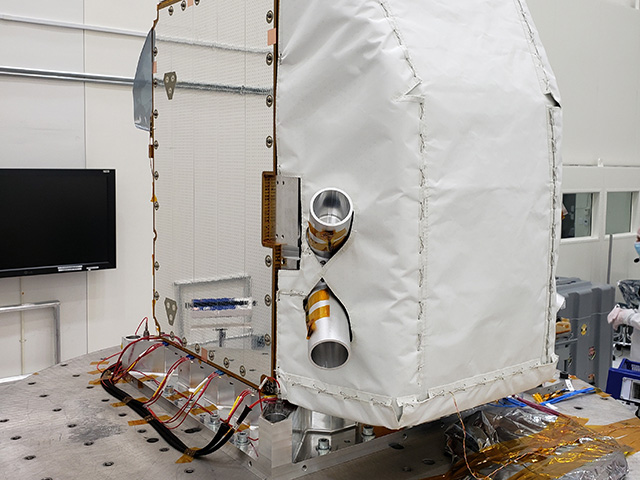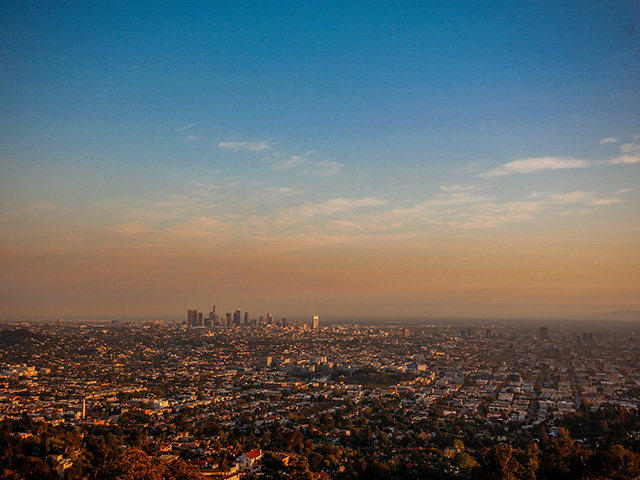News | April 17, 2017
'Detergent' molecules may drive recent methane changes

Rice paddy fields in India. Agriculture is one source of global methane emissions. Credit: Flickr user sandeepachetan.com travel (CC BY-NC-ND 2.0).
A new NASA- and Department of Energy-funded study finds that recent increases in global methane levels observed since 2007 are not necessarily due to increasing emissions, but instead may be due to changes in how long methane remains in the atmosphere after it is emitted.
The second most important human-produced greenhouse gas after carbon dioxide, methane is colorless, odorless and can be hard to track. The gas has a wide range of sources, from decomposing biological material to leaks in natural gas pipelines. In the early 2000s, atmospheric scientists studying methane found that its global concentration — which had increased for decades, driven by methane emissions from fossil fuels and agriculture — leveled off as the sources of methane reached a balance with its destruction mechanisms. The methane levels remained stable for a few years, then unexpectedly started rising again in 2007, a trend that is still continuing.
Previous studies of the renewed increase have focused on high-latitude wetlands or fossil fuels, Asian agricultural growth, or tropical wetlands as potential sources of the increased emissions. But in a study published today in the early online edition of the Proceedings of the National Academy of Sciences, researchers at Harvard University in Cambridge, Massachusetts; Caltech in Pasadena, California; and NASA's Jet Propulsion Laboratory, also in Pasadena, suggest that methane emissions might not have increased dramatically in 2007 after all.
The researchers used long-term measurements of methane, its isotopes and methylchloroform (1,1,1,-trichloroethane, a chemical compound that serves as a proxy for estimating how long methane remains in the atmosphere) from numerous global ground stations. From these data, the scientists were able to determine sources of methane and how quickly it is destroyed in Earth's atmosphere. They found that the most likely explanation for the recent increase has less to do with methane emissions than previously thought and more to do with changes in the availability of the hydroxyl radical (OH), which breaks down methane in the atmosphere. As such, the amount of hydroxyl in the atmosphere has an impact on global methane concentrations. If global levels of hydroxyl decrease, global methane concentrations will increase — even if methane emissions remain constant.
"Think of the atmosphere like a kitchen sink with the faucet running," said co-corresponding author Christian Frankenberg, an associate professor of environmental science and engineering at Caltech and a JPL research scientist. "When the water level inside the sink rises, that can mean that you've opened up the faucet more. Or it can mean that the drain is blocking up. You have to look at both."
In this analogy, the hydroxyl radical represents the draining mechanism in the sink. It is highly reactive and acts like a detergent in the atmosphere, triggering a series of chemical reactions that culminate in the formation of carbon dioxide and water vapor.
In tracking the observed changes in methane and the inferred changes in hydroxyl, Frankenberg and his colleagues noted that fluctuations in hydroxyl concentrations can explain some of the recent methane trends. However, the authors cannot explain the causes for the global changes in hydroxyl concentrations seen in the past decade. They say future independent studies are needed to quantify year-to-year variations in the hydroxyl radical and their potential drivers. They would also like to see the trends they detected verified with more detailed studies of the sources and the destruction mechanisms of methane, particularly in the tropics.
"The tropics are the tricky part," Frankenberg said. "They're very complex in terms of methane emissions and destruction." Methane has the shortest lifetime in the tropics due to the large amounts of water vapor and radiation there. But because tropical areas are often remote and cloud-covered (thwarting satellite observation), they remain understudied, he said.
The study is titled "Ambiguity in the causes for decadal trends in atmospheric methane and hydroxyl." Frankenberg's collaborators on the paper are lead author and Harvard graduate student Alexander Turner, Daniel Jacob of Harvard, and Paul Wennberg of Caltech. A NASA Carbon Monitoring System grant co-funded the study.
Media contacts
Alan Buis
Jet Propulsion Laboratory, Pasadena, Calif.
818-354-0474
alan.buis@jpl.nasa.gov
Robert Perkins
Caltech, Pasadena, Calif.
626-395-1862
rperkins@caltech.edu





